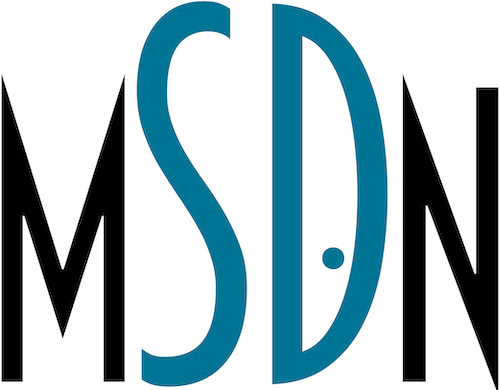Family relationships can be complicated, can’t they? In big families, it can be hard to forge your own identity, or come to grips with the quirky identities of some of your brothers or sisters.
And holiday get-togethers, or election years? Forget about it.

But still, healthy families find a way to make peace of it all. Even in very large families of 26 members.
I refer of course to the 26 letters of the alphabet, with a cast of siblings about as quirky as they come, many of whom can’t even decide how they should be pronounced from moment to moment. And then there’s that fickle sibling Y, who insists sometimes on using the vowel restroom, and sometimes the consonant one.
And yet, at the risk of blowing the whole alphabetic family up, may I suggest that they have ignored one sibling for far too long—one patient, essential letter who in many ways puts all the others to shame.
And that is the letter @. Because while we weren’t watching, this quiet keystroke has become indispensable in our everyday lives. It’s way more important and useful to us than a lot of the other letters sitting around the alphabet family table, getting fat without doing so much as lifting a finger to earn it. (That’s right, I mean you, X and Z.)
But where would we be without @? The World-Wide Web would come crashing down without it. E-mail would pile up undelivered, and we would all be licking stamps again and waiting for the mail truck to deliver our spam. Except on silent Sunday, of course.
So that’s why I think it’s high time to officially welcome @ to the alphabetic family.
We’re already a quarter of the way through the 21st Century, and who says growth can’t be a good thing in the modern world? If we can talk about adding Canada or Greenland as a 51st State, why can’t we consider making @ our 27th letter?
Oh, I can already hear some of those other letters grumbling. Even the ones who try to occupy three or four different seats at the alphabetic Thanksgiving table.
Take the letter C, for example, that likes to pretend it’s a K when it’s acting, or an S when it’s racing. Sometimes it even swings both ways, like when it’s getting a vaccine. Don’t even ask me what’s going on with C when it’s rolling around with itself in mostaccioli.
Other letters aren’t as vocal about their objections, but I can tell they’re pouting. Like P, who just falls psychotically silent at the thought of welcoming a new sibling.
“I don’t like it,” proclaims the letter I—of course. The only one of the family who insists on being capitalized into a word all unto itself without the help of other family members.
Well, get over it, I say. Just because you’ve been at the party a lot longer, that’s no reason to deny welcoming @ to the alphabetic family.
But how did it all happen? Where has @ been all these thousands of years while the rest of the letters have been noodling around together?
Well, @ has been a silent workhorse for a long time, laboring away in commerce since the 1500’s to mean “each at” or “per” to signify how much an item would cost if purchased by itself. But its use was so limited, it wasn’t even included in the keyboards of early 1800’s typewriters.
Then everything changed in 1971, when computer scientist Ray Tomlinson was tasked with solving a vexing problem: How to send a computer message from one person to another person at a different computer, one which might service several users. He would need two names—the name of the person and the name of the computer—linked by a symbol. In other words: “To this person at that computer.”
But what rarely-used symbol could stand for “at” in the sentence?
I think you know the answer to th@ by now.
The rest is history, and it’s time for history to officially welcome @ to the alphabetic family.
And then, once @ starts feeling comfortable in its new role as a card-carrying member of the alphabet, it can give some of the other overworked letters a chance to rest a bit. Baseball players will hit a ball with a b@. You’ll diet to take off the f@. Instead of sewing on a p@ch, you can use glue to @@ch it.
All this from a letter so patient, so quiet, and so unassuming that it never insists on being capitalized, even in @lanta. It’ll be a big hit everywhere, from Ch@anooga to Se@tle,
And so, to welcome our old friend @ to its new role as a starter in the letter lineup, I’ve penned a little limerick to mark the occasion. I call it:
How ‘bout th@
My h@’s off to keyboard key @,
Who for years, s@ as mute as a c@.
Now every .com,
Every e-mail to mom
Calls on @ when they communic@.
Best of all, we wouldn’t even have to change our ABC song for little kids to learn once we accept @ to the alphabet. Go ahead, sing it to yourself—I’ll wait.
See, when you got to that last line, “W, X, Y and Z,” how hard would it be to pretend that we’ve been singing “W, X, Y @ Z” all along?
Look, you and your siblings have been singing the wrong lyrics to songs all your life—why should it be any different with the first song you ever learned?
TR Kerth is the author of the book “Revenge of the Sardines.” Contact him at trkerth@yahoo.com




